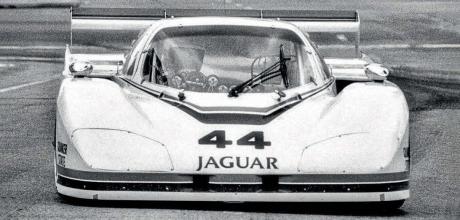Jaguar XJR-5 wins first race, Road Atlanta, April 10 1983
Road Atlanta might be thousands of miles away on the other side of the Atlantic, but what happened at the American circuit four decades ago would have a direct impact on Jaguar’s future success at Le Mans. Ever since Bob Tullius’ Group 44 team had announced its IMSA GTP programme with the V12-engined XJR-5 in the early Eighties, there had been speculation that it would be a spring board for the British company to head back to the famed 24-hour race. Jaguar, though, initially played down its chances.
FINISHING LINES
“Le Mans is part of Jaguar’s heritage and we will go back there one day,” admitted Jim Randle in the September 1983 issue of Motor Sport. “But it will only be if I feel sure that we have a chance of winning. I don’t want to say any more than that, and do not intend to be pressured into going to Le Mans until all of our research and development has been completed.”
Plus, due to the poor start of the XJR-5 programme, it didn’t look as if it would happen. Debuting half way through the 1982 IMSA season, other than third at its first race at Elkhart Lake on 22 August, 1982, results were disappointing. And so over the winter, Group 44’s designer, Lee Dykstra, started a gradual process of refining the car, making many of the components lighter.
On the strength of these changes plus the 500bhp the 6.0-litre V12 was producing, even before the 1983 season had started, Mike Dale (British Leyland’s vice president for sales and marketing in America) was bullish about the team’s chances. “I shall be surprised if we do not win a major race in the US before 1983 is out,” he wrote in a letter to Jaguar’s former PR manager turned marque historian, Andrew Whyte.
Yet the year began as 1982 had finished. After briefly leading the first race of the season, the Daytona 500, in early February, Tullius hit the barrier, breaking the suspension. Next came a new Miami street race two weeks later that was stopped early due to torrential rain when Tullius and his co-driver, Bill Adam were in fifth. After qualifying second at Sebring in March, the green and white Group 44 Jaguar was in a strong position but again retired due to a blown head gasket.
It wasn’t until IMSA championship headed south to Georgia for the Road Atlanta 500km on April 10 that everything finally came together. Due to changeable weather – which meant several unscheduled pitstops to switch from dry to wet tyres – after qualifying a lowly 12th, Tullius and Adams managed to take the lead. With the car running like clockwork, they stayed there.
But with just five laps to go, a competitor swerved into the XJR-5, badly damaging the left-hand bodywork, causing a water leak. Thanks to building up a considerable lead, Tullius was able to nurse his stricken car to take the flag, 18 seconds ahead of second-placed Bill Whittington and Emory Donaldson in a March 93G-Chevrolet.
This victory plus three others that year at Lime Rock, Mosport and Ponoco showed an attack on the Le Mans 24 Hours was possible. “Nothing would give Jaguar enthusiasts across the world more pleasure than to see this programme meet with success in Le Mans,” was Motor Sport’s summation in its September 1983 issue.
Understanding its huge PR value, Jaguar’s then chairman, (Sir) John Egan, had long supported the idea of a return to Le Mans. “Winning this race was very important to rebuilding Jaguar’s mystique,” he admitted in his 2015 biography, Saving Jaguar. And so Egan gave the green light for Group 44 outfit to enter a pair of XJR-5s for the 1984 race. As Jaguar’s first Le Mans start for two decades, it was an emotional moment for everyone involved with Egan later describing it as “heart-stirring.” Yet this debut and the later victories at the hands of TWR might never have happened if wasn’t for that first win thousands of miles away in Georgia.


